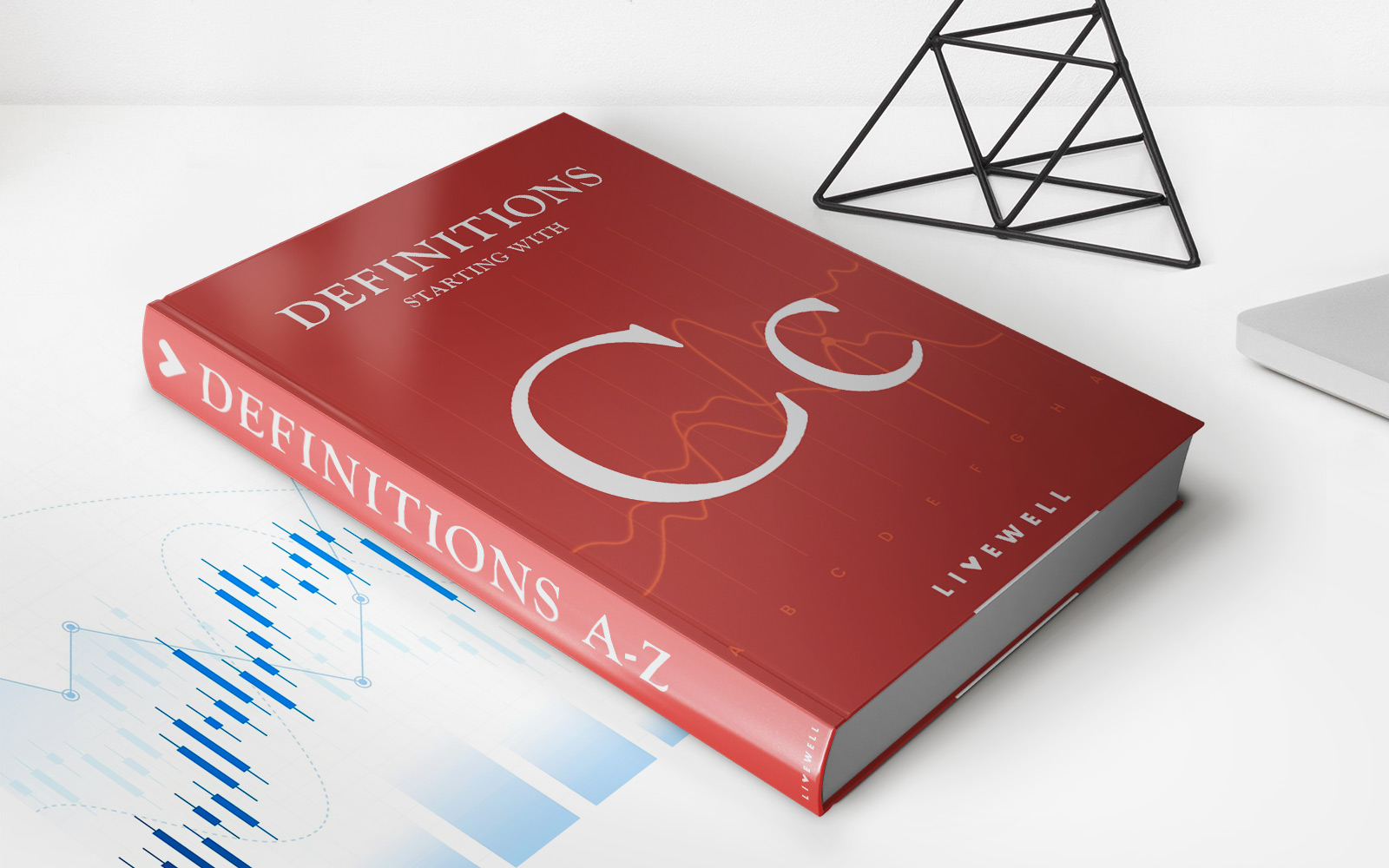Home>Finance>How Does Wells Fargo Figure Credit Utilization Ratio To Report To Credit Bureau?


Finance
How Does Wells Fargo Figure Credit Utilization Ratio To Report To Credit Bureau?
Published: March 6, 2024
Learn how Wells Fargo calculates credit utilization ratio for reporting to credit bureaus and manage your finances effectively. Understanding credit utilization is crucial for maintaining a healthy credit score. Discover more about finance and credit reporting with Wells Fargo.
(Many of the links in this article redirect to a specific reviewed product. Your purchase of these products through affiliate links helps to generate commission for LiveWell, at no extra cost. Learn more)
Table of Contents
- Introduction
- Understanding Credit Utilization Ratio
- Importance of Credit Utilization Ratio
- Wells Fargo’s Method for Calculating Credit Utilization Ratio
- Factors Affecting Credit Utilization Ratio Reported to Credit Bureaus
- Impact of Credit Utilization Ratio on Credit Score
- Tips for Managing Credit Utilization Ratio
- Conclusion
**
Introduction
**
Welcome to the world of credit utilization ratio and its impact on your credit score. Understanding how financial institutions calculate and report credit utilization is crucial for maintaining a healthy credit profile. In this article, we will delve into the intricacies of credit utilization ratio, its significance, and how Wells Fargo computes and reports this vital metric to credit bureaus.
Credit utilization ratio, often referred to as the balance-to-limit ratio, plays a pivotal role in determining an individual's creditworthiness. It represents the percentage of a person's available credit that is currently being utilized. This ratio is a key component in the calculation of credit scores and is closely scrutinized by lenders when evaluating an individual's credit risk.
As we explore the methodology employed by Wells Fargo to determine credit utilization ratios and report them to credit bureaus, it's essential to grasp the broader context of credit utilization and its implications. By comprehending these concepts, you can gain insight into how your financial behaviors impact your credit profile and take proactive steps to optimize your credit utilization ratio.
Now, let's embark on a journey to unravel the intricacies of credit utilization ratio and gain a comprehensive understanding of how Wells Fargo factors this crucial metric into the credit reporting process.
**
Understanding Credit Utilization Ratio
**
Before delving into the specifics of how Wells Fargo calculates and reports credit utilization ratios, it’s essential to grasp the fundamental concept of credit utilization ratio and its significance in the realm of personal finance.
Credit utilization ratio is a pivotal metric that reflects the proportion of available credit currently being utilized. It is calculated by dividing the total outstanding credit card balances by the total credit card limits. For instance, if an individual has a total credit limit of $10,000 across all their credit cards and carries a combined balance of $3,000, their credit utilization ratio would be 30%.
This ratio holds considerable weight in credit scoring models, as it offers insights into an individual’s borrowing habits and financial management. Lenders and credit bureaus utilize credit utilization ratios to assess an individual’s creditworthiness and financial responsibility. A lower credit utilization ratio is generally indicative of prudent financial behavior, while a higher ratio may raise concerns about excessive borrowing and potential credit risks.
Understanding the nuances of credit utilization ratio empowers individuals to make informed decisions regarding their credit usage and borrowing practices. By maintaining a low credit utilization ratio, individuals can demonstrate responsible financial management, which can positively influence their credit scores and overall creditworthiness.
As we delve deeper into the intricacies of credit utilization ratio, it’s crucial to recognize its role as a barometer of financial prudence and its impact on credit profiles. By comprehending the fundamental principles of credit utilization ratio, individuals can navigate the credit landscape with greater confidence and make strategic choices to optimize their credit metrics.
**
Importance of Credit Utilization Ratio
**
The importance of credit utilization ratio cannot be overstated when assessing an individual’s financial health and creditworthiness. This metric holds significant sway in the realm of credit scoring and lending decisions, making it imperative for individuals to grasp its implications.
A low credit utilization ratio is indicative of responsible credit management and financial prudence. Lenders interpret a low ratio as a positive signal, reflecting an individual’s ability to manage credit responsibly and avoid excessive debt accumulation. This, in turn, can enhance an individual’s creditworthiness and increase the likelihood of favorable lending terms and interest rates.
Conversely, a high credit utilization ratio can raise red flags for lenders, signaling potential financial strain and a heightened risk of default. Individuals with elevated ratios may be perceived as relying too heavily on credit, which can cast doubt on their ability to manage additional debt obligations. As a result, higher credit utilization ratios can lead to diminished credit scores and hinder access to favorable lending opportunities.
Moreover, credit utilization ratio not only impacts individual credit scores but also influences the overall borrowing capacity. Lenders often consider this metric when assessing an individual’s eligibility for new credit lines or loan approvals. A high credit utilization ratio may deter lenders from extending additional credit, while a low ratio can bolster an individual’s borrowing power and financial flexibility.
Understanding the importance of credit utilization ratio empowers individuals to proactively manage their credit profiles and make informed financial decisions. By maintaining a low ratio and effectively managing credit usage, individuals can position themselves for improved credit scores, enhanced creditworthiness, and favorable lending terms.
As we unravel the significance of credit utilization ratio, it becomes evident that this metric serves as a cornerstone of sound financial management and plays a pivotal role in shaping individuals’ credit trajectories.
**
Wells Fargo’s Method for Calculating Credit Utilization Ratio
**
Wells Fargo, a prominent financial institution, employs a systematic approach to calculate and report credit utilization ratios, which significantly impacts customers’ credit profiles. Understanding how Wells Fargo determines this crucial metric is instrumental for individuals seeking to manage their credit responsibly and optimize their credit scores.
When computing credit utilization ratios, Wells Fargo considers the aggregate credit card balances across all accounts and divides this sum by the total credit card limits. This calculation yields the percentage of available credit currently being utilized by the customer. For instance, if a customer holds multiple Wells Fargo credit cards with varying credit limits and balances, the combined balances are aggregated, and the total credit limit across all cards is used to derive the credit utilization ratio.
It is important to note that Wells Fargo regularly reports credit card balances and credit limits to the credit bureaus. As a result, the credit utilization ratio derived from Wells Fargo accounts is conveyed to the credit reporting agencies, influencing individuals’ credit scores and overall creditworthiness.
Furthermore, Wells Fargo emphasizes the significance of maintaining a low credit utilization ratio to support healthy credit profiles. By encouraging customers to utilize credit responsibly and manage their balances prudently, Wells Fargo aims to foster positive credit behaviors and empower individuals to navigate the credit landscape with confidence.
Wells Fargo’s method for calculating credit utilization ratio aligns with industry standards and best practices, ensuring that customers’ credit metrics are accurately represented and reported to credit bureaus. By adhering to transparent and consistent methodologies, Wells Fargo strives to provide customers with a clear understanding of how their credit utilization ratios are determined and the ensuing impact on their credit profiles.
As we unravel the intricacies of Wells Fargo’s approach to calculating credit utilization ratio, it becomes evident that the institution places a premium on fostering responsible credit management and empowering customers to make informed financial decisions that positively influence their creditworthiness.
**
Factors Affecting Credit Utilization Ratio Reported to Credit Bureaus
**
Several key factors influence the credit utilization ratio reported to credit bureaus, shaping individuals’ credit profiles and impacting their overall creditworthiness. Understanding these determinants is crucial for individuals aiming to optimize their credit utilization ratios and bolster their financial standing.
1. Credit Card Balances: The outstanding balances on credit cards directly contribute to the credit utilization ratio. Higher balances relative to credit limits can elevate the ratio, potentially impacting credit scores and lending decisions.
2. Credit Limits: The total credit limits across all credit cards play a pivotal role in determining the credit utilization ratio. Higher credit limits can help lower the ratio, provided the balances are managed prudently.
3. New Credit Lines: Opening new credit lines can impact the overall credit utilization ratio, especially if the new accounts come with substantial credit limits. Careful consideration is essential when acquiring new credit to mitigate potential effects on the ratio.
4. Closed Accounts: Closing credit accounts can affect the credit utilization ratio, particularly if the closed accounts had significant credit limits. This can lead to a reduction in available credit, potentially elevating the overall ratio.
5. Payment Patterns: Timely payments and consistent efforts to reduce credit card balances can positively influence the credit utilization ratio. Responsible payment behaviors contribute to a lower ratio and reflect favorably on individuals’ credit profiles.
6. Credit Reporting Cycles: The timing of credit card balance reporting can impact the credit utilization ratio. Individuals should be mindful of reporting cycles to ensure that balances are managed strategically before being reported to credit bureaus.
Understanding these factors empowers individuals to make informed decisions regarding their credit usage and borrowing practices. By proactively managing credit card balances, credit limits, and new credit acquisitions, individuals can optimize their credit utilization ratios and position themselves for improved credit scores and enhanced creditworthiness.
As we navigate the intricate landscape of credit utilization ratio determinants, it becomes evident that these factors play a pivotal role in shaping individuals’ credit profiles and influencing their financial trajectories.
**
Impact of Credit Utilization Ratio on Credit Score
**
The credit utilization ratio wields substantial influence over individuals’ credit scores, making it a critical determinant of their overall creditworthiness. Understanding how this ratio affects credit scores is paramount for individuals seeking to optimize their financial standing and secure favorable lending opportunities.
Significant Influence: Credit utilization ratio holds considerable weight in credit scoring models, with experts often citing it as one of the most influential factors in determining credit scores. A lower ratio is generally associated with higher credit scores, reflecting responsible credit management and prudent financial behaviors.
Negative Impact of High Ratios: Elevated credit utilization ratios can exert a detrimental impact on credit scores. Lenders and credit scoring models may interpret high ratios as a sign of financial strain and a heightened risk of default, potentially leading to lower credit scores and diminished creditworthiness.
Strategic Management: Proactively managing credit utilization ratios can yield tangible benefits for individuals aiming to bolster their credit scores. By maintaining low ratios and effectively managing credit card balances, individuals can position themselves for improved credit scores and enhanced credit profiles.
Credit Score Fluctuations: Changes in credit utilization ratios can lead to fluctuations in credit scores. Individuals who strategically manage their ratios by paying down balances and optimizing credit limits may witness positive shifts in their credit scores over time.
Long-Term Impact: The impact of credit utilization ratio on credit scores extends beyond short-term fluctuations. Consistently maintaining low ratios and exercising prudent credit management can contribute to sustained improvements in credit scores and long-term creditworthiness.
Understanding the intricate relationship between credit utilization ratio and credit scores empowers individuals to make informed decisions regarding their credit usage and borrowing practices. By strategically managing their ratios and demonstrating responsible credit behaviors, individuals can positively influence their credit scores and pave the way for enhanced financial opportunities.
As we navigate the realm of credit scoring and credit utilization, it becomes evident that this ratio serves as a linchpin in shaping individuals’ credit trajectories and influencing their access to favorable lending terms and financial products.
**
Tips for Managing Credit Utilization Ratio
**
Effectively managing credit utilization ratio is pivotal for maintaining a healthy credit profile and optimizing credit scores. By implementing strategic practices and prudent financial behaviors, individuals can proactively control their credit utilization ratios and bolster their creditworthiness.
1. Monitor Credit Card Balances: Regularly monitoring credit card balances and staying mindful of credit limits is essential for managing the credit utilization ratio. Keeping balances well below credit limits can contribute to a lower ratio and positively impact credit scores.
2. Strategic Credit Card Usage: Utilize credit cards judiciously and avoid maxing out card limits. Responsible usage, such as making small purchases and promptly paying off balances, can help maintain a favorable credit utilization ratio.
3. Credit Limit Reviews: Periodically reviewing and potentially increasing credit limits can aid in lowering the credit utilization ratio. However, it is crucial to exercise restraint in utilizing the enhanced limits to avoid escalating the ratio.
4. Balance Payments Before Reporting Cycles: Understanding the timing of credit card balance reporting cycles and strategically paying down balances before these cycles can positively influence the reported credit utilization ratio.
5. Avoid Closing Unused Accounts: Closing unused credit accounts can diminish available credit, potentially elevating the credit utilization ratio. It may be beneficial to keep these accounts open to maintain a lower overall ratio.
6. Diversify Credit Usage: Diversifying credit usage across multiple accounts can help distribute balances and manage the credit utilization ratio more effectively. This approach can contribute to a balanced and favorable ratio across various credit lines.
7. Regular Credit Monitoring: Engage in regular credit monitoring to stay informed about credit card balances, limits, and overall credit utilization. Awareness of these metrics enables individuals to make informed decisions and take proactive steps to manage their credit utilization ratio.
By implementing these tips and adopting prudent credit management practices, individuals can navigate the intricacies of credit utilization ratio with confidence, optimize their credit scores, and fortify their financial well-being.
As we delve into the realm of credit utilization management, it becomes evident that strategic and informed approaches are instrumental in shaping individuals’ credit profiles and fostering long-term financial stability.
**
Conclusion
**
In conclusion, the intricacies of credit utilization ratio and its profound impact on individuals’ credit profiles underscore the significance of understanding and effectively managing this pivotal metric. As we navigate the realm of credit utilization and its implications, it becomes evident that credit utilization ratio serves as a barometer of financial responsibility and prudent credit management.
By comprehending the methodology employed by financial institutions such as Wells Fargo in calculating and reporting credit utilization ratios, individuals can gain valuable insights into the factors that shape their credit profiles. The importance of maintaining a low credit utilization ratio emerges as a cornerstone of sound financial management, influencing credit scores, lending decisions, and overall creditworthiness.
Furthermore, the impact of credit utilization ratio on credit scores underscores the need for strategic management and prudent credit behaviors. Individuals can leverage strategic tips and best practices to proactively control their credit utilization ratios, thereby positioning themselves for improved credit scores and enhanced financial opportunities.
As we reflect on the multifaceted nature of credit utilization ratio and its implications, it is evident that informed decision-making and proactive credit management are instrumental in shaping individuals’ financial trajectories. By embracing these principles and navigating the credit landscape with vigilance and prudence, individuals can optimize their credit utilization ratios, fortify their credit profiles, and pave the way for sustained financial well-being.
Ultimately, a comprehensive understanding of credit utilization ratio, coupled with strategic credit management practices, empowers individuals to chart a course toward enhanced creditworthiness, favorable lending terms, and enduring financial stability.














